Enterprise brands face unique challenges in local SEO. Learn 4 of the most common ways and how to solve them for a more effective enterprise locally. Local SEO is a strange beast. Mastering it for an enterprise requires both knowing how to do “national” SEO, Google My Business SEO, and then understanding how Google treats your target search queries in different markets. That means there is an infinite number of challenges in enterprise locales for search marketers.
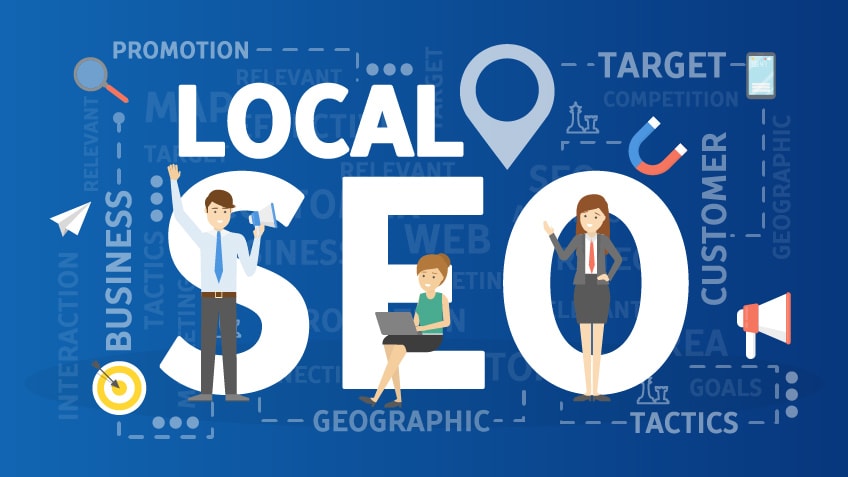
What Are the Most Common Challenges in Enterprise Local SEO?
- Prioritizing local with internal stakeholders.
- Having a single source of truth for location data.
- Optimizing store locators.
- Google My Business management & optimization.
1. Prioritizing Local Internally
It sounds strange, but I can’t tell you how many multi-location organizations we have worked with where the locations were not the priority for the digital marketing organization. In the case of retailers, we found that the organization was typically focused on “national” ecommerce marketing. Locations were an annoyance that got the least amount of investment possible. It makes sense. Dealing with hundreds or thousands of locations is complicated.
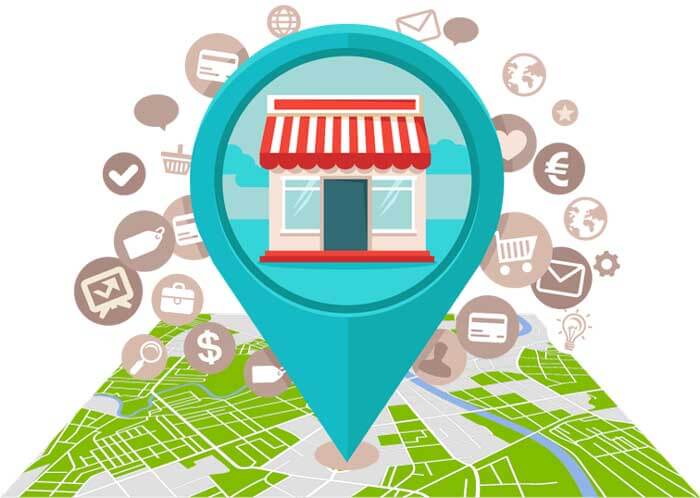
But at the same time, the locations themselves are typically your biggest asset when it comes to SEO. The challenge with each of these organizations was how to convince them to prioritize “Local.” The solution is pretty simple: Show them the money. While there are plenty of ways to do this, here’s where to start.
Define the Total Addressable Market for Top Categories
Let’s say a multi-location e-tailer has 40 categories that are important to them from a revenue POV. It would be helpful for them to understand how their site is doing for valuable keywords in these categories across each market. This is no small feat, as the more categories and markets a business serves, the more data you need to crunch. For a truly national brand, we would often start with 10 million keywords and 5,000 markets.
As I said, it’s a lot of data. We won’t get into detail about how to work with this data other than to say the outcome of this analysis should show how the brand ranks by category versus its competitors across all markets. You need to be able to see where the brand is strong and where it is weak.
Where it is weak, we can see which competitors are dominating and how they are doing it. In particular, we want to see markets and categories with only a small number of winning competitors. This is a signal that there is an opportunity for the brand. Once we have the categories and markets with opportunities, we can apply search volume data to get an idea of how big that opportunity is.
Assuming the opportunity is big enough, this now provides the justification and the road map for investment.
Test Your Plan in a Limited Number of Markets
Once you have your plan, pick a small number of locations on which to test your plan. Hopefully, you have access to an analytics team that can help with the stats needed to make the test valid. Roll your test out, measure the results, and then have the stats team estimate how the results would look if the rollout had been to all the locations. A successful test + multi-location math can often give the organization the confidence to make bigger bets.
2. Have One Source of Truth for Location Data
With the advent of local listings management companies such as Yext and Uberall, this is not so much of a problem anymore. However, we still run into multi-location businesses that don’t have a “single source of truth” for all of their location information. If you don’t have this yet, put it in place.
3. Optimizing Store Locators
Many brands outsource their store locators to third-party vendors. There’s nothing wrong with this in theory, but there are a few ways we have seen this go wrong:
Search-Only Store Locators
For SEO, an effective store locator should be a basic linked set of State, City, and Location pages that a bot or user can easily click around to get to every page. But many brands often build their store locators on a locator page with a search box to find your location.

A few years ago, we looked at the locators for the top 100 U.S. retailers and found those with search-only locators ranked for ~50% fewer keywords than those with a linkable State > City > Location architecture. So make sure your locator architecture is built this way.
Location Page Content
Oftentimes, brands budget for building a locator on their site but leave nothing for the content. There’s nothing wrong with a basic location page that has the business name, address, phone number, product/service categories, etc. But a location page with unique, beefed-up content that is relevant to both the location and topics you are trying to rank for can definitely improve SEO performance.
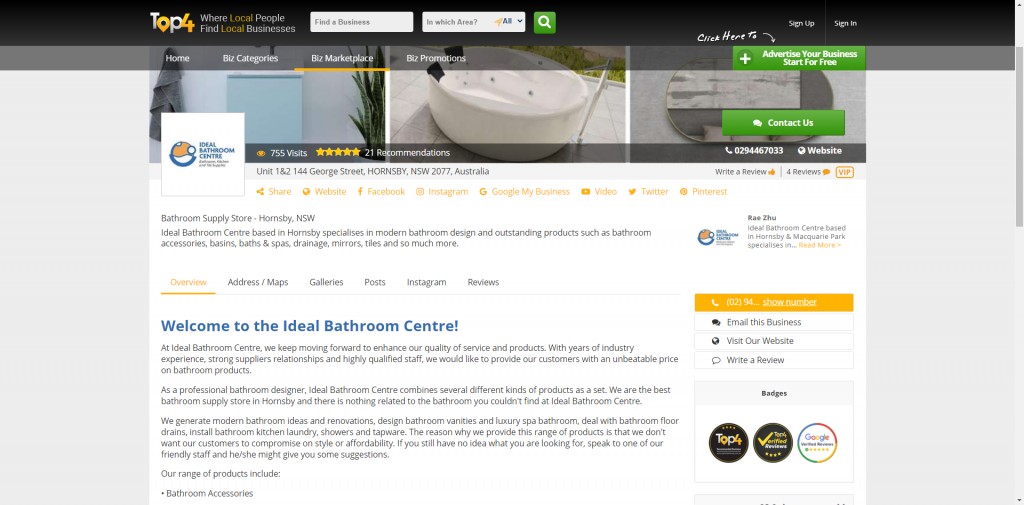
This is where your location managers can come in handy. We often see successful brands use surveys of their location managers to get unique local content. Other sources might include local customer reviews, syndicated local point of interest data, and products that are popular in the specific market.
Priority Categories
Most ecommerce queries show local results near the top of the SERPs these days. We often see brands that are winning in Local Packs linking from their location pages to their key categories. Think of it as a way to signal to Google that your locations are relevant for these categories.
4. Google My Business Management & Optimization
Google My Business (GMB) really shouldn’t be a challenge – I mean it’s just a simple set of yellow pages listings for your locations – but there are a million ways it can go wrong for businesses.
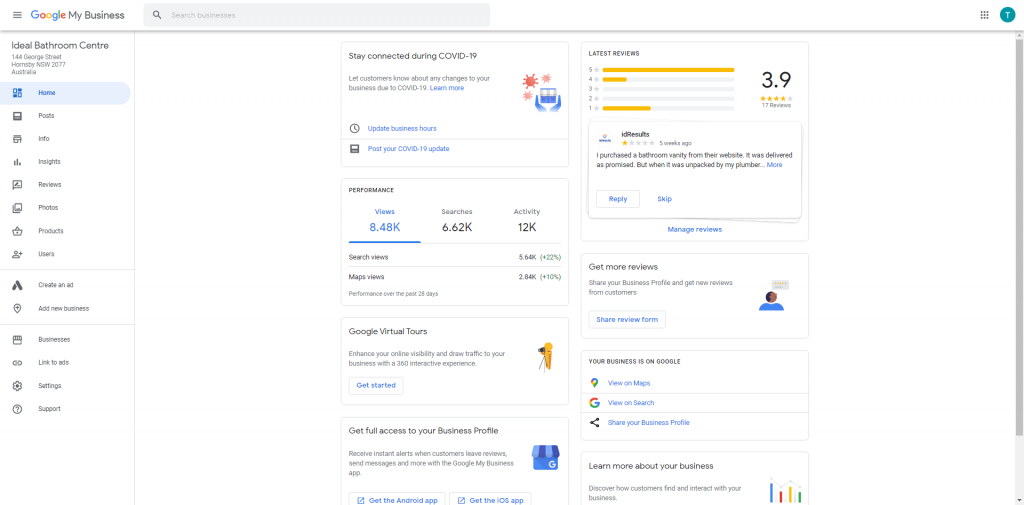
Here are just a few challenges and opportunities with GMB.
Beware of Duplicate Listings
It’s amazing that duplicate listings are still a thing with GMB, but I just talked to a service area business that was having problems ranking. It was pretty easy to see they had duplicate GMB listings. The minute they deleted the duplicate listings, their rankings went up by 15 positions for the main keyword they were targeting. So keep an eye on those.
Monitor Your GMB listings
Your GMB listings are in a constant state of flux. Users are adding photos and reviews. Google can overwrite your data if it trusts data from another party more than it trusts you. GMB is not a “set it and forget it” kind of thing. Create a system to regularly monitor changes to your GMB pages.
While you can see many changes via the GMB Dashboard, it won’t catch everything. That’s one of the reasons we built this free open-sourced tool to monitor image changes to your GMB.
Scale GMB Posts
GMB Posts are short announcements you can attach to your GMB business profile. These can be an inexpensive way to generate high-converting visits to your site. Posts can include text, photos, or videos. The challenge we often see is that businesses are often not set up to produce content for each location. If you want to do GMB Posts for multiple locations, implement a system for creating GMB-ready marketing collateral for new promotions so they can be posted.

This often involves creating a GMB-sized version (400 x 300) of approved marketing images and copies for GMB as part of each new promotion. You’ll also want to make sure you tag links from your GMB posts with a tracking parameter so you can measure performance in your analytics.
As I said at the top, there are an infinite number of local SEO tactics enterprise brands can deploy. As with every other marketing channel, get creative, test, measure, and iterate to help you move beyond these common enterprise local SEO challenges.
To find out how we can help you with your Website + Marketing, using our unique location marketing platform called Top4, get in touch today at www.top4marketing.com.au
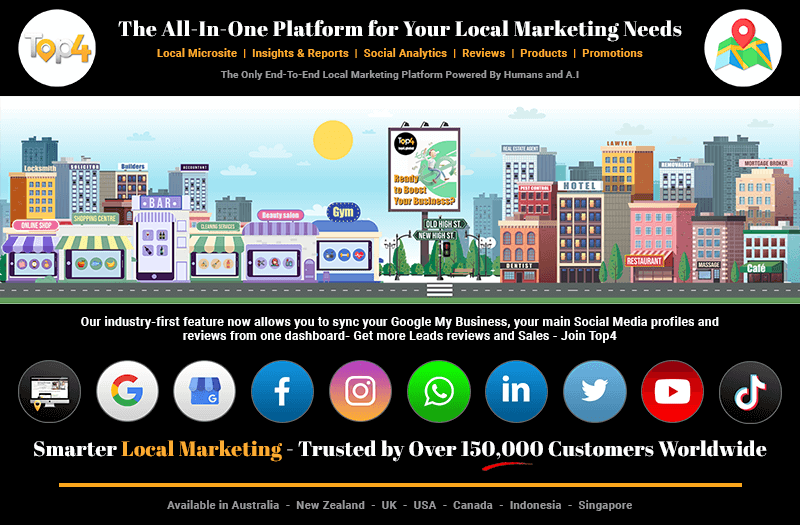
Looking to build customer loyalty through social media? Don’t forget to add your business to Top4.com.au
List your business, create your own digital store to sell goods and services, and share posts on social media. Promote your business on Google instantly! Should you need help with local digital marketing then view our new Google Marketing Platform and services Top4 Marketing
Get Found On Google Promote Your Website, Reach local customers today!
Our Digital Marketing Agency Services Across All Industries Include Search Engine Optimisation (SEO), Google Marketing, Website Design, Corporate Web Development, and local location-based marketing using our own Google Marketing Platform!
Engage A Social Media Agency For Only 1/3 The Cost Of Employing A Social Media Manager…LET’S TALK!
Source: searchenginejournal.com




